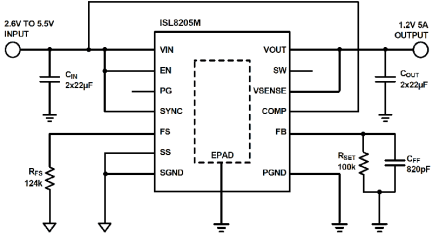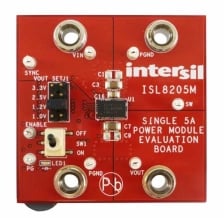5A Single Channel High-Efficiency DC/DC Step-Down Power Module Evaluation Board
The ISL8205MEVAL1Z evaluation board is designed to demonstrate the performance of the ISL8205M 5A single-channel high-efficiency DC/DC step-down power module. The board...




